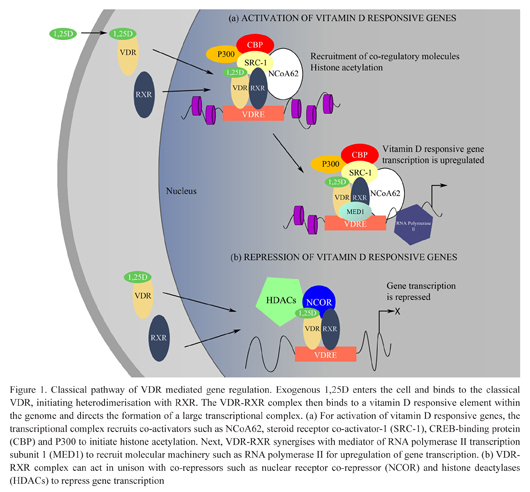Figure 1.

Classical pathway of VDR mediated gene regulation. Exogenous 1,25D enters the cell and binds to the classical VDR, initiating heterodimerisation with RXR. The VDR-RXR complex then binds to a vitamin D responsive element within the genome and directs the formation of a large transcriptional complex. (a) For activation of vitamin D responsive genes, the transcriptional complex recruits co-activators such as NCoA62, steroid receptor co-activator-1 (SRC-1), CREB-binding protein (CBP) and P300 to initiate histone acetylation. Next, VDR-RXR synergises with mediator of RNA polymerase II transcription subunit 1 (MED1) to recruit molecular machinery such as RNA polymerase II for upregulation of gene transcription. (b) VDRRXR complex can act in unison with co-repressors such as nuclear receptor co-repressor (NCOR) and histone deactylases (HDACs) to repress gene transcription
